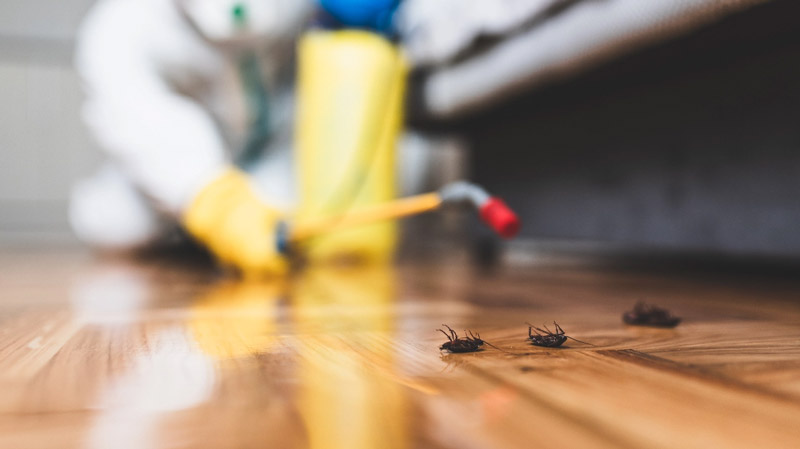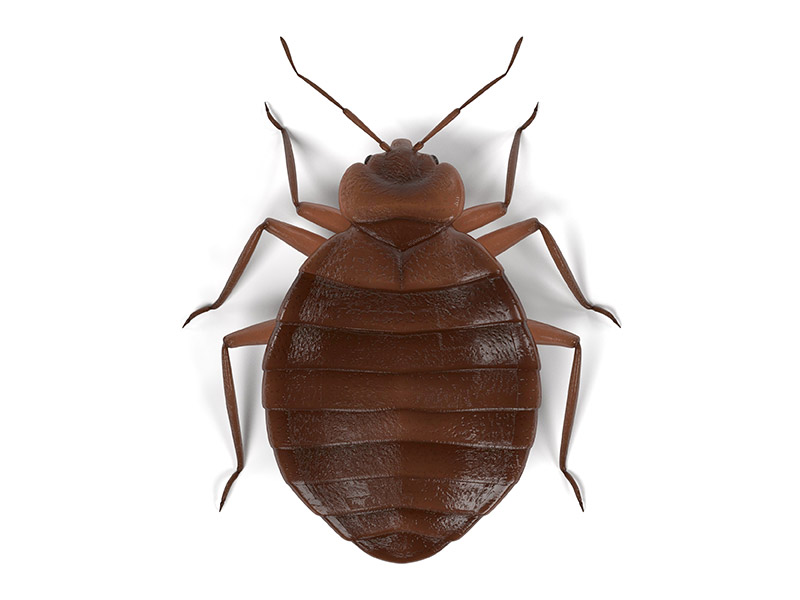Pest Control services for residential and commercial properties.
Pest Control services for residential and commercial properties.
Blog Article
Eco-Friendly Parasite Control Approaches for Managing Wildlife in Urban Locations
Urban areas usually find themselves at the crossway of human task and wild animals, resulting in special challenges in insect management. Environment-friendly approaches emphasize sustainable coexistence, utilizing methods such as environment alteration and all-natural repellents to mitigate human-wildlife disputes. These methods not just protect the environment but likewise improve neighborhood involvement in wild animals management. As metropolitan populaces remain to grow, comprehending the characteristics of wild animals interactions ends up being significantly vital. What cutting-edge methods can be implemented to guarantee both ecological balance and metropolitan security? Exploring this inquiry reveals an engaging landscape of possible services.
Understanding Urban Wild Animals Dynamics
Recognizing Urban Wild animals Characteristics is necessary for establishing reliable and eco-friendly bug control strategies. Urban areas are progressively becoming habitats for numerous wild animals species, driven by variables such as environment fragmentation, food accessibility, and human advancement. Acknowledging these characteristics enables a nuanced approach to pest administration that straightens with environmental concepts.
Urban wildlife usually includes varieties such as raccoons, squirrels, and birds, which adapt to city environments, discovering niches in eco-friendly rooms, parks, and even property locations. Their existence can bring about conflicts with people, specifically when they make use of personnels for food and shelter. Recognizing the behaviors and eco-friendly roles of these types educates methods that reduce negative interactions while advertising biodiversity.
Additionally, recognizing the interdependencies within metropolitan environments helps in recognizing important areas for environment preservation and reconstruction. This understanding adds to the development of incorporated pest monitoring (IPM) methods that consider the environmental balance, thus decreasing dependence on dangerous chemicals. By promoting conjunction in between human beings and urban wildlife, cities can produce much healthier settings that benefit both residents and local environments, leading the means for sustainable urban living.
Natural Repellents and Deterrents
All-natural repellents and deterrents offer a lasting choice to conventional insect control techniques by harnessing the power of nature to keep unwanted species at bay. These eco-friendly services usually make use of plant-based ingredients, essential oils, and other normally occurring substances that discourage bugs without harming the environment.
One efficient all-natural repellent is peppermint oil, which is understood to ward off rodents and pests. Its strong scent is unpleasant to numerous pests, making it a prominent option for metropolitan settings. Vinegar and citrus peels can offer as deterrents, as their solid odors are generally unappealing to various wild animals.
In addition, diatomaceous planet is an all-natural powder that can be spread in areas susceptible to pest task, efficiently dehydrating and hindering bugs without presenting dangers to non-target species. Furthermore, garlic sprays and neem oil are recognized for their ability to drive away a vast array of insects, including both insects and bigger wild animals.
Applying these all-natural repellents not just reduces dependence on chemical pesticides yet additionally promotes a much healthier urban ecosystem, fostering a much more well balanced coexistence between people and wildlife. By using these approaches, metropolitan areas can successfully handle parasite populations while lessening ecological effect.
Habitat Modification Methods
Reliable habitat alteration methods play try here an important function in sustainable pest administration by changing the atmosphere to make it less conducive to pest infestations. By understanding the eco-friendly characteristics of urban locations, homeowner can apply tactical modifications that prevent bugs while promoting biodiversity.
(Mouse Control)One main method includes maintaining correct sanitation. This consists of normal waste removal, safeguarding trash can, and getting rid of standing water to lower reproducing websites for bugs and rodents. In addition, landscaping techniques such as picking indigenous plants can boost ecological balance, supplying habitats for helpful microorganisms while reducing resources for bugs.
An additional crucial method is to secure entry points in structures. Checking and repairing splits in structures, walls, and home windows can considerably lower pest access. Moreover, producing physical barriers, such as fences or plant barriers, can inhibit wildlife movement into human-inhabited locations.
Integrated Bug Monitoring Practices
Structure upon habitat modification techniques, integrated pest administration (IPM) techniques provide an all natural approach to controlling pest populaces while minimizing environmental effect. IPM combines different strategies, including organic, cultural, mechanical, and chemical controls, to attain effective parasite monitoring.
Organic control involves the intro of all-natural killers or bloodsuckers to minimize pest populaces. Social methods, such as plant turning and cleanliness, disrupt pest life process and reduce their habitats - Pest control service. Mechanical controls, like traps and barriers, give immediate remedy for pest pressures without chemical intervention
Chemical controls are used as a last option, concentrating on targeted applications that restrict harm to non-target types and the atmosphere. The option of environmentally friendly pesticides, when essential, is indispensable to the IPM framework. Furthermore, monitoring pest populaces and analyzing prospective damage assists notify decision-making, making certain that interventions are prompt and efficient.
Neighborhood Involvement and Education And Learning

(Integrated pest management Port Charlotte)Workshops and informational sessions can gear up homeowners with expertise regarding indigenous types, environment conservation, and reliable safe bug monitoring techniques. Collaboration with schools, regional organizations, and federal government firms further boosts academic outreach, guaranteeing that necessary details gets to diverse target markets.
Additionally, community-led campaigns, such as neighborhood clean-up days and habitat remediation projects, not only promote biodiversity however likewise enhance neighborhood ties. Pest Control. By motivating locals to share their experiences and monitorings, areas can establish targeted strategies that address specific local parasite problems
Integrating feedback from residents into parasite monitoring intends allows a much more responsive and flexible strategy to wild animals difficulties. Ultimately, informed and engaged communities are key to achieving lasting success in eco-friendly pest control, bring about much healthier metropolitan environments that value both human and environmental needs.

Verdict
Finally, eco-friendly bug control approaches deal sustainable solutions for handling urban wild animals. By prioritizing environment modification, making use of natural repellents, and implementing integrated pest administration techniques, areas can promote an unified coexistence with local animals. Involving citizens via education boosts awareness and urges responsible wildlife communications. Eventually, these techniques not just secure biodiversity but also promote environmental health and wellness, ensuring urban areas stay lively environments where humans and wildlife flourish with each other.
Report this page